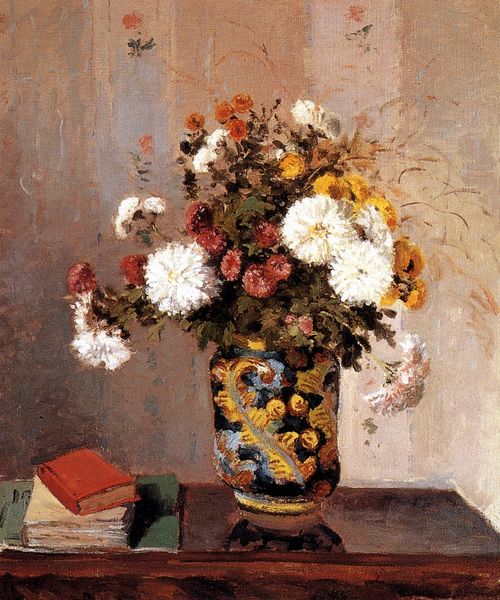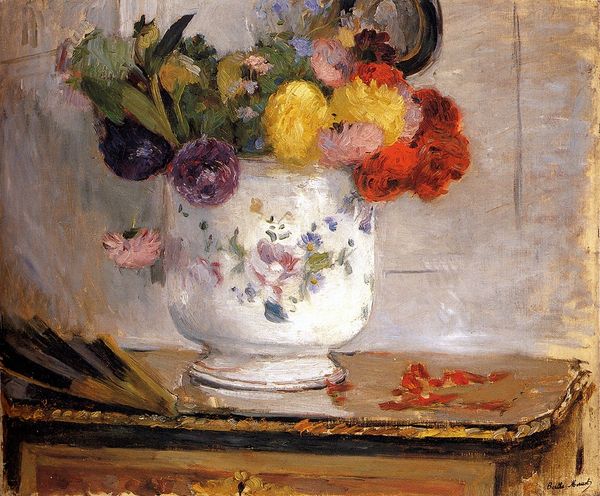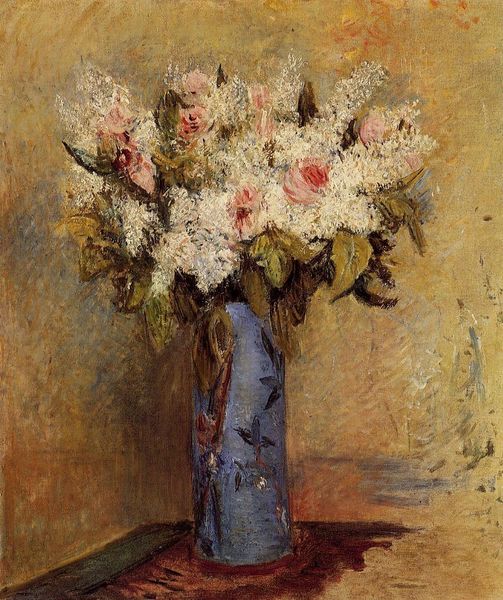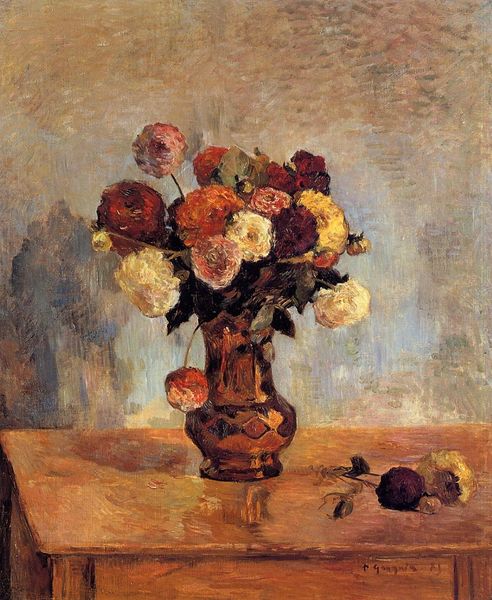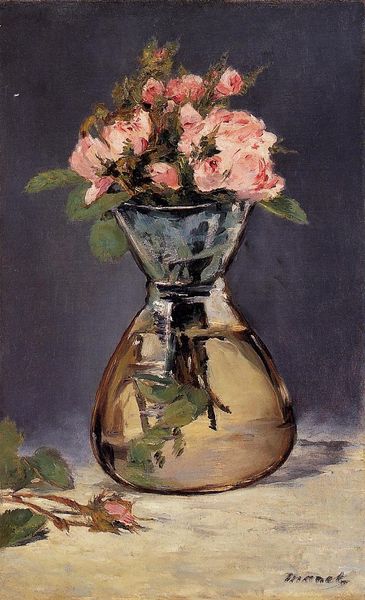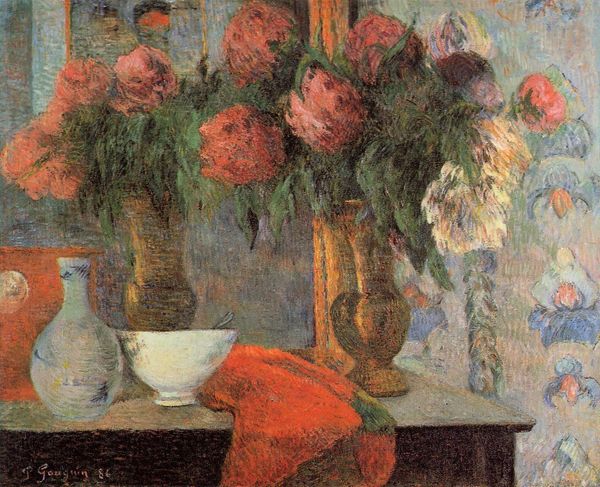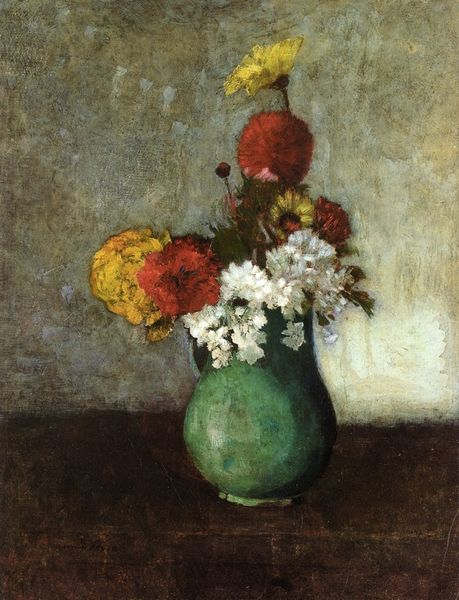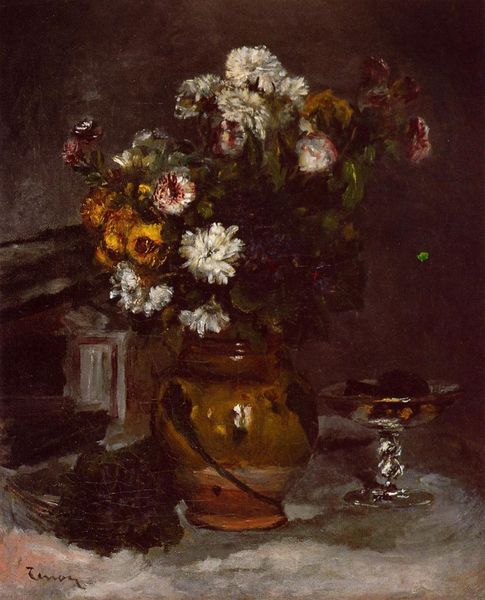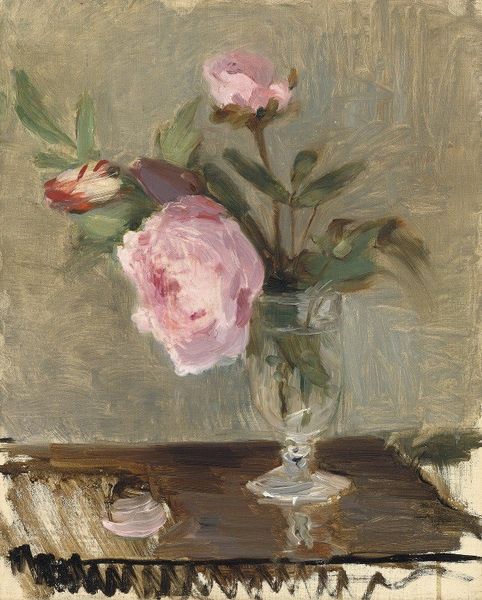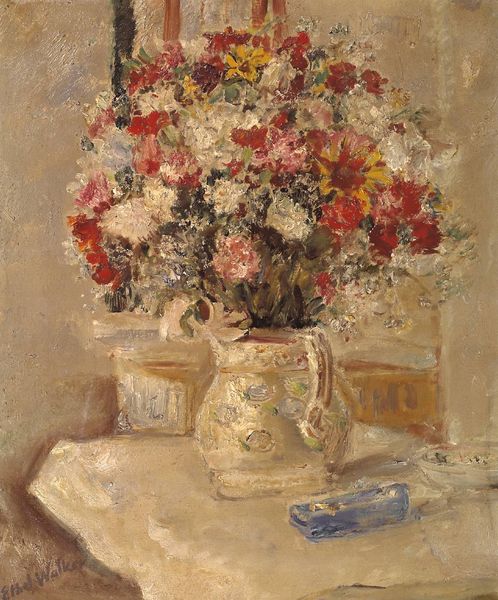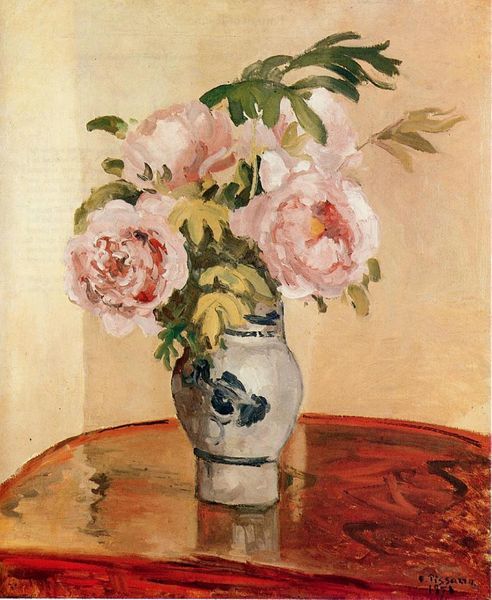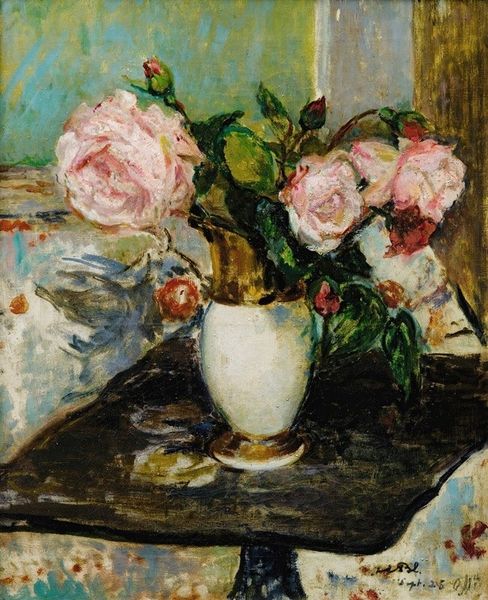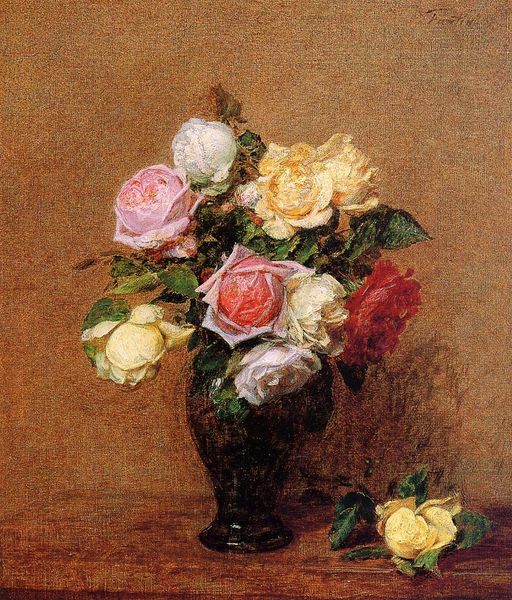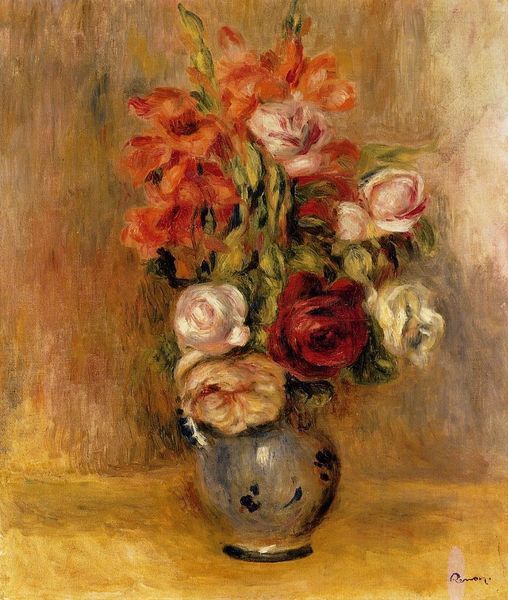
painting, oil-paint, photography
#
portrait
#
still-life
#
gouache
#
painting
#
impressionism
#
oil-paint
#
photography
#
oil painting
#
acrylic on canvas
#
watercolor
Dimensions: 59.4 x 46.4 cm
Copyright: Public domain
Curator: This is Camille Pissarro’s "Bouquet of Flowers," painted in 1873. You can find it here at the High Museum of Art in Atlanta. Editor: My first impression is of quiet domesticity. The blurred edges and soft color palette evoke a sense of intimacy, almost as if we're peeking into someone's home. Curator: Pissarro was a key figure in the Impressionist movement, and this work exemplifies some of its key tenets. The focus here isn't necessarily on perfect realism, but rather on capturing the fleeting effects of light and color. Editor: I’m intrigued by the composition – a loose arrangement of flowers in an ornate vase, set atop a dark, somewhat nondescript table, almost secondary to the flowers themselves. What sort of material practice choices can we consider, particularly with the vase? Curator: Right, that porcelain vase certainly catches the eye, perched rather precariously. One can read these specific floral arrangements—roses in particular—as a commentary on bourgeois values or even a critique of ephemeral beauty and wealth. These arrangements were often specifically assembled to convey various messages. Editor: Absolutely, and I think analyzing the oil paint application reinforces that observation. Notice the short, broken brushstrokes – a hallmark of Impressionism. It appears so casually rendered, as if quickly captured, but I imagine much consideration went into its execution. It’s also a fairly traditional medium. The use of common, widely available materials suggests the increasing accessibility of art-making itself at this time. Curator: Definitely. These flowers and their container would be a common subject and sight in urban homes as the bourgeois acquired their personal wealth. Yet it goes beyond the realistic record—it's about capturing a mood and imbuing it with symbolism from the period and Pissarro himself. It’s a slice of life infused with a touch of allegory. Editor: I agree. There’s a tension, for me, between the fleeting impression of light and color, with the clear presentation of accessible and available goods during the second half of the 19th century. Curator: Looking at this still life through those lenses has enriched my appreciation for it. The layers of meaning in something that seems so simple reveal its place in a much broader conversation. Editor: And considering it as an object manufactured with skill, and materials widely available at the time of its making, it creates a more intimate connection, rather than thinking of a purely rarefied artwork.
Comments
No comments
Be the first to comment and join the conversation on the ultimate creative platform.
